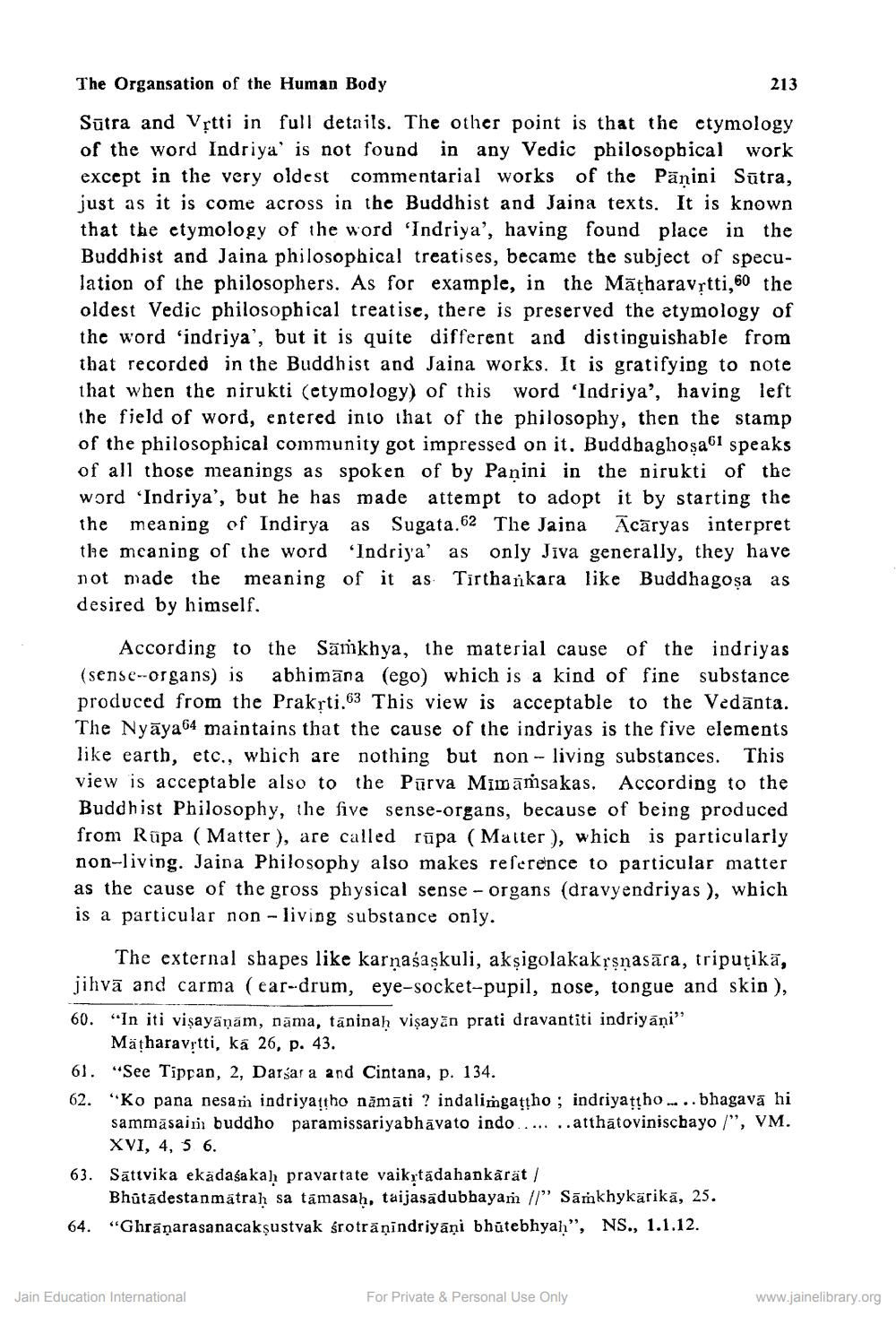________________
The Organsation of the Human Body
213
Sūtra and Vștti in full details. The other point is that the etymology of the word Indriya' is not found in any Vedic philosophical work except in the very oldest commentarial works of the Panini Sūtra, just as it is come across in the Buddhist and Jaina texts. It is known that the etymology of the word 'Indriya', having found place in the Buddhist and Jaina philosophical treatises, became the subject of speculation of the philosophers. As for example, in the Mātharavrtti, 60 the oldest Vedic philosophical treatise, there is preserved the etymology of the word 'indriya', but it is quite different and distinguishable from that recorded in the Buddhist and Jaina works. It is gratifying to note that when the nirukti (etymology) of this word 'Indriya', having left the field of word, entered into that of the philosophy, then the stamp of the philosophical community got impressed on it. Buddbaghosa 61 speaks of all those meanings as spoken of by Panini in the nirukti of the word 'Indriya', but he has made attempt to adopt it by starting the the meaning of Indirya as Sugata.62 The Jajna Ācāryas interpret the meaning of the word 'Indriya' as only Jiva generally, they have not made the meaning of it as Tirthařkara like Buddhagosa as desired by himself.
According to the Sāmkhya, the material cause of the indriyas (sense-organs) is abhimāna (ego) which is a kind of fine substance produced from the Prakrti.63 This view is acceptable to the Vedānta. The Nyāya64 maintains that the cause of the indriyas is the five elements like earth, etc., which are nothing but non -- living substances. This view is acceptable also to the Pūrva Mināmsakas. According to the Buddhist Philosophy, the five sense-organs, because of being produced from Rūpa (Matter ), are called rūpa (Matter ), which is particularly non-living. Jaina Philosophy also makes reference to particular matter as the cause of the gross physical sense - organs (dravyendriyas), which is a particular non-living substance only.
The external shapes like karnaśaskuli, aksigolakakrsnasāra, tripuţikā, jihvā and carma (ear-drum, eye-socket-pupil, nose, tongue and skin ), 60. "In iti visayäņām, nāma, taninah vişayān prati dravantiti indriyāņi”
Mäharavrtti, ka 26, p. 43. 61. "See Tippan, 2, Darsar a and Cintana, p. 134. 62. "Ko pana nesam indriyattho nāmāti ? indalimgatho ; indriyatho .... bhagavā hi
sammāsain buddho paramissariyabhavato indo..... ..atthātoviniscbayo /", VM.
XVI, 4, 5 6. 63. Sättvika ekādasakah pravartate vaikytādahankärät /
Bhūtādestanmätrah sa tāmasaḥ, taijasadubhayam 1/" Sāmkhykärikā, 25. 64. “Ghrāṇarasanacakşustvak śrotrāṇindriyāņi bhūtebhyah”, NS., 1.1.12.
Jain Education International
For Private & Personal Use Only
www.jainelibrary.org




